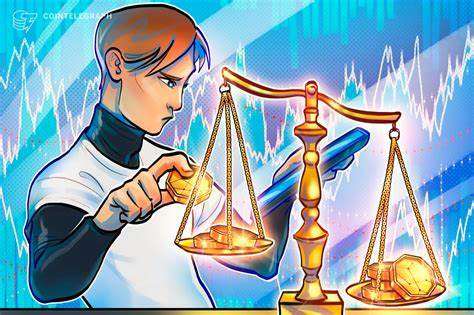近年来,随着区块链技术和加密货币的迅速发展,相关的法律案件和监管问题愈发引人关注。近期,美国纽约南区法院正在审理的罗曼·斯托姆案件成为业界热点。作为知名混币服务Tornado Cash的共同创始人,斯托姆目前面临包括洗钱、非法经营未获授权的资金转账业务以及违反美国制裁令的多项指控。审判中,一场围绕证人证词范围的法庭争论引发广泛讨论,特别是检方试图阻止关于加密货币相关绑架和酷刑作案的证言。这背后折射出的法律界与加密行业的矛盾与挑战,值得深入解读。 该案的核心在于检方针对辩方律师可能引用的那些涉及因加密货币引发的绑架及暴力事件的证词提出异议。
临时纽约检察官、前美国证监会主席杰伊·克莱顿(Jay Clayton)向负责审理案件的法官凯瑟琳·法伊拉(Katherine Failla)提交了动议,请求法院禁止辩方在证人作证时涉及“因加密货币而被威胁、伤害甚至绑架”的事件。 克莱顿在动议中指出,此类证词不仅与被告斯托姆的主观意图无直接关联,还可能带有煽动性质,引发陪审团偏见甚至正义感的过度干预(俗称陪审团无效裁决)。据他所言,这些涉及暴力和犯罪团伙威胁的证据超出了专家证人应提供的专业范围,混淆了案件的焦点,偏离了对被告行为的合理评判。事实上,在审判刚开始后,斯托姆律师的首次开庭陈述中提及用户的身体安全问题已令检方两次提出异议,也直接促成了此次动议的提交。 证人方面,预计将出庭的是加密货币安全与合规领域的资深专家马修·格林(Matthew Green)。格林拟就风险投资家为何避免与犯罪活动挂钩发表证言。
检方认为,如果允许格林讲述投资者及其相关人员遭遇绑架与酷刑的真实案例,将大大増加庭审的情绪化元素,削弱审判的客观公正。对此,辩方律师则可能主张此类极端事件证明了被告运营的混币服务潜在的违法风险与社会伤害,旨在为被告的状态及所涉业务性质作出辩解。 本案不仅涉及刑事指控,还牵涉到美国对加密货币业务的监管框架。例如,涉及制裁合规和资金传输规则的指控,反映出美国政府加强金融安全审查的信号。此外,混币服务是否应承担用户资金流向的合规责任,成为讨论焦点。证人还包括来自知名律所的重要律师,他曾代理在2021年遭遇安全漏洞的加密交易平台BitMart。
该律师曾联系Tornado Cash,调查与被盗资金相关的交易明细,以辅助司法调查与资金追回工作。 More than just a legal trial, the Roman Storm case serves as a lens through which the interplay between emerging blockchain technologies and traditional law enforcement can be examined. The protracted debate over the admissibility of testimony on highly charged topics like kidnapping underscores the difficulty courts face in balancing evidentiary relevance with the potential for unfair prejudice. This balance is particularly delicate in the context of cryptocurrency, a field often marred in public perception by associations with illicit uses, yet also strongly championed for innovation and financial inclusivity. Analyzing the broader implications, the court's stance on such evidence could set benchmarks for future crypto-related litigation in the United States. Allowing testimony about violent incidents tied to crypto could prompt juries to conflate the technology with the actions of some criminal elements, potentially skewing verdicts. Conversely, overly restricting evidence may limit the capacity to present a comprehensive picture of the operational environment in which such services function, perhaps understating genuine risks. The trial also reflects rising attention to the negative externalities associated with unregulated or under-regulated crypto activities. Kidnapping for crypto assets, though not widespread, has emerged as a real-world consequence of the often-anonymous and irreversible nature of blockchain transactions. The inability of conventional legal systems to easily trace and recover such assets may embolden criminal actors. Furthermore, this case could influence venture capital perspectives. As Matthew Green is set to highlight, investors carefully weigh the reputational and legal risks of engaging with entities potentially linked to criminal acts. Thus, statements from such witnesses could have lasting impact on funding flows into blockchain startups and even on strategic corporate behavior within the crypto space. The trial, expected to extend over a month, is being closely followed by industry observers, legal experts, and regulators alike. The outcomes here will not only determine the fate of Roman Storm but may well catalyze broader regulatory and judicial approaches towards complex crypto service providers. Tornado Cash's role as a mixing service further complicates matters, specifically regarding the responsibility of facilitating transaction anonymity versus the risk of enabling illicit financial flows. In conclusion, the move by US prosecutors to block testimony related to crypto kidnappings exemplifies the multifaceted nature of crypto litigation today. It raises fundamental questions on how the justice system should adjudicate in an era where digital assets blur traditional lines of accountability and introduce novel criminal vectors. The repercussions of the court's decisions in New York could reverberate far beyond this individual case, influencing the evolution of crypto regulation, public perception, and the future development of blockchain technologies worldwide. Stakeholders across the ecosystem would do well to monitor and analyze these developments carefully as they signal evolving intersections of law, technology, and society.。










